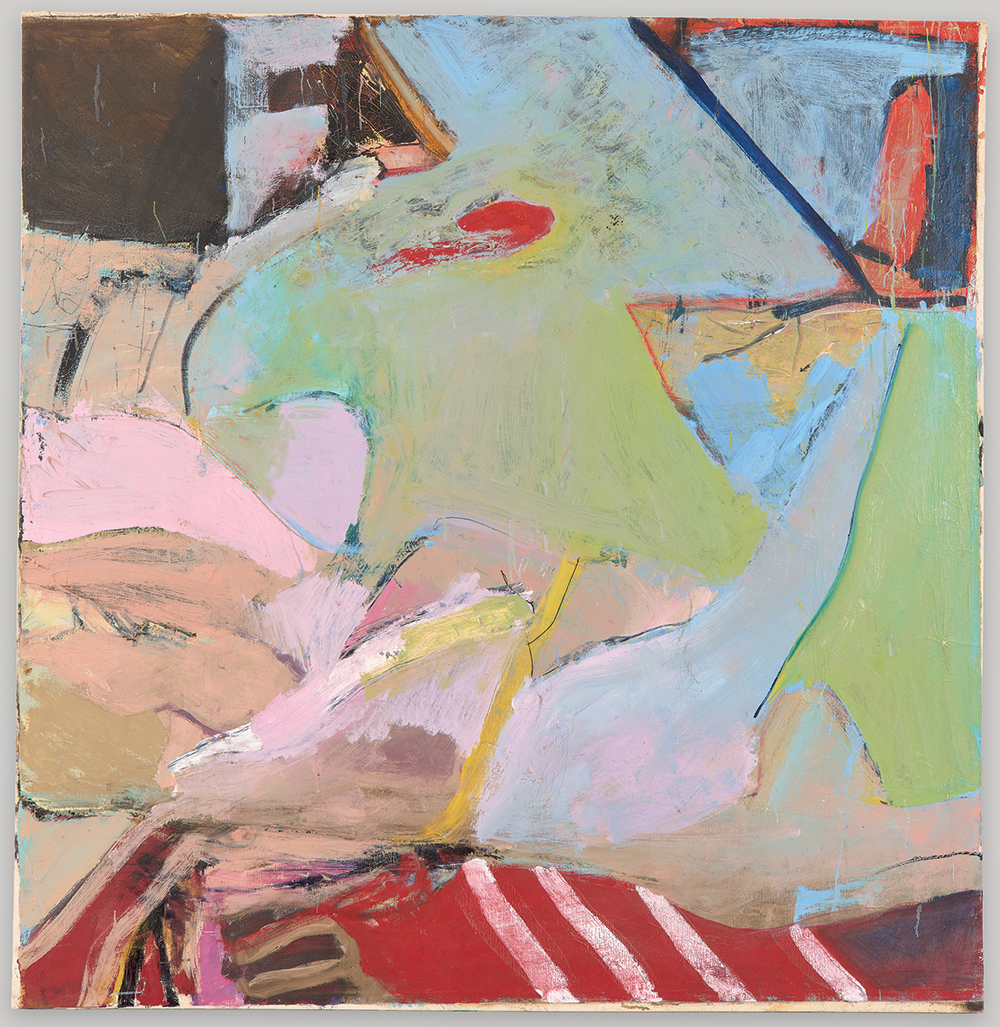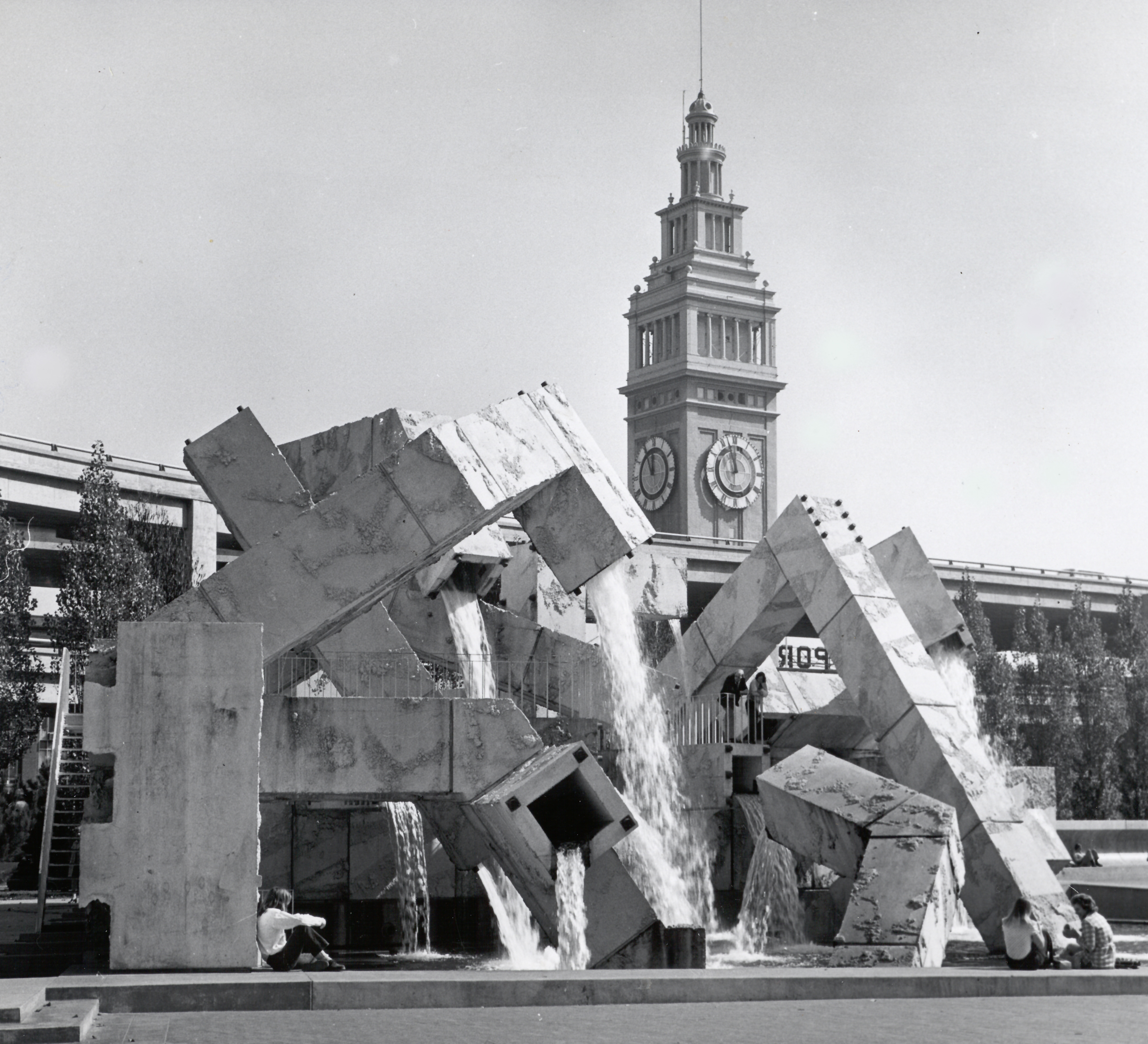
The Dual Passions of Bernice Bing
By Grace Loh Prasad
"Into View: Bernice Bing" opens at the Asian Art Museum on October 7
What does it mean to create a community from the ground up? For most people, the first community they experience is the family they’re born into. But for artist Bernice Bing, born in San Francisco’s Chinatown in 1936, those roots were truncated when both of her parents passed away when she was five years old. Raised in foster homes and an orphanage for most of her early life, a sense of stability and belonging would elude her until she found her calling as an artist. Bing received a scholarship to California College of Arts and Crafts and went on to receive BFA and MFA degrees from the San Francisco Art Institute. She became part of the burgeoning Beat era arts scene along with peers such as Joan Brown, Jay DeFeo, and others. Even in the freewheeling 1960s, carving out a space for herself as a woman, Asian American, and lesbian wasn’t easy.
A retrospective exhibit at the Asian Art Museum, "Into View: Bernice Bing" (October 7 — May 1, 2023), aims to tell that story and bring more attention to Bing’s powerful and groundbreaking work. According to head of contemporary art and associate senior curator Abby Chen, “Ever since I joined the Asian Art Museum, I’ve wanted to build a contemporary art collection that is relevant. My overall goal is to highlight and amplify unheard voices — and also to bring more visibility to artists of this generation that were under-recognized and under-appreciated.”

"A Lady and a Road Map," 1962, by Bernice Bing. Oil on canvas. © Asian Art Museum of San Francisco. Museum purchase. © Estate of the Artist.
The exhibit will feature newly acquired and never-before-exhibited art including Bing’s last major work, a monumental canvas called "Epilogue," and a painting called "A Lady with a Road Map." "For artists like Bernice Bing and Carlos Villa, they never had a market, so it was important for the Asian Art Museum to practice this equity not just in exhibiting but also in acquiring their work,” said Chen. The Bernice Bing estate also made a gift to the museum of a series of ink-on-paper drawings that will also be on view for the first time.
Most of Bing’s colorful and dynamic earlier work is categorized as Abstract Expressionism, reflecting the influence of Richard Diebenkorn and others at CCA. Japanese American artist Saburo Hasegawa also made a deep impression on Bing at CCA, and after traveling extensively in China in the 1980s, she began to explore and express her Chinese heritage in her work by incorporating elements of calligraphy. Later mature work referenced her commitment to Buddhism (often referring to Buddhist texts such as the Lotus Sutra) and the spirituality of nature.
Bing’s artistic talent and achievements were noted by her teachers and contemporaries, and she exhibited in several major group shows although she never quite broke through to a mainstream audience. In some ways, she is remembered more as a champion and supporter of women of color artists. One could say that nurturing community and mentoring other artists is itself a form of artistic output that is just as deserving of recognition, accolades and support.
In 1989, Chinese American artist Flo Oy Wong met Mills College art history professor Moira Roth at the National Women’s Caucus on Art. Shortly after, the pair along with Betty Kano co-founded the Asian American Women Artists Association (AAWAA) in San Francisco to advance the visibility and recognition of Asian American women in the arts. Bing joined them at their second meeting which was the beginning of a long association and friendship. Although they were close in age, Wong was just starting her career as an artist while Bing had decades under her belt. They shared a common belief that succeeding in the art world would be next to impossible without greater representation for women of color. “No matter how talented or wonderful an individual is,” said Wong, “as persons of color, we are underrepresented and don't get the attention we deserve unless we form a critical mass.”
Bing’s advocacy extended to other organizations too. Chinese American artist and former Kearny Street Workshop (KSW) executive director Nancy Hom met Bing in the 1970s, when she served as a liaison for the Neighborhood Arts Program (NAP), a precursor to the San Francisco Arts Commission which gave KSW one of its first grants. After that, says Hom, “she became less of a funder visiting an organization and more of a friend and supporter.” Their relationship deepened when Bing became the first executive director of the South of Market Cultural Center (now SOMArts) and Hom was appointed to the Board.
“If I had to pick one word to describe Bernice, it would be her generosity. I haven’t seen anybody else so unselfishly give,” said Hom. “She felt like we all needed to form a community and support each other because we wouldn't be able to achieve the visibility that we deserve without banding together. That's what building community is really about… to have a bigger voice.”
“Above all, Bernice was a seeker,” said Wong. “She wanted to know who she was, where she belonged, and where she would be accepted.” By charting her own way, she also created a path for others. Bing’s legacy is twofold, as an artist with a bold and original vision spanning Eastern and Western sensibilities, and as a community builder who worked tirelessly to create space for other marginalized artists. It’s time that both of these accomplishments got their due.
→ "Into View: Bernice Bing" October 7, 2022 - May 3, 2023. Visit asianart.org.
Main image: Bernice Bing in her North Beach studio, approx. 1960. Photographer unknown. Image courtesy Estate of Bernice Bing / Asian Art Museum.



